Welcome to Labkafe ~ Orientallabs Retail Services Private Limited
Feb 15, 2022 / By Swarna Karmakar / in Experiments Physics Equipment
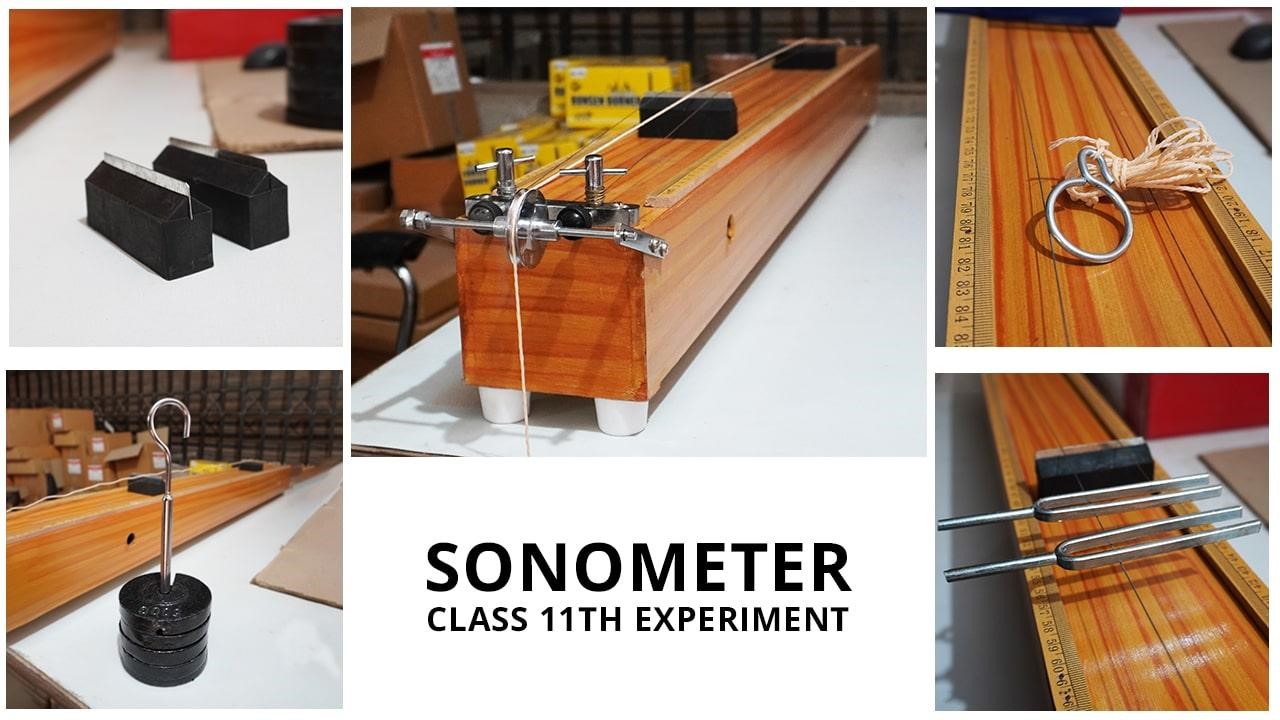
How to Perform the Sonometer Experiment with Tuning Forks
Previously, we have talked about what a sonometer is and why we use it in class 11-12 physics labs all around. Now that you know about the sonometer theory, we will tell you how to do the sonometer experiment today. This is a very important, and sometimes quite difficult experiment for students of classes XI XII of CBSE ICSE IGCSE State Boards. Nevertheless, if you follow the procedure given below and note the insights from our experts, you will be able to do it with good results.
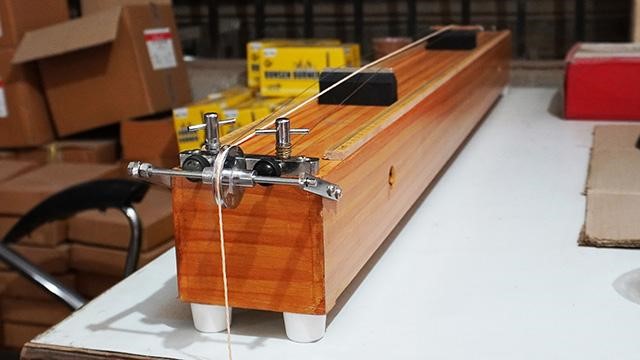
A sonometer is one of the most important lab equipment in most high school level physics labs. It helps the students understand how a stretched wire produces sound, and how exactly that sound can be precisely changed. A sonometer, derived from an ancient instrument called monochord, connects music to mathematics. In real life it is used to tune various musical instruments.
Explanation: Basically, in the sonometer experiment what we will do is this. First, we will set up the sonometer with the given wire and weights. Then we will try to match the vibrating tones of a tuning fork and the wire, at which point they will resonate together. The best way to do this is to place a piece of paper on the taut wire and see at which length the wire vibrates so much that it throws off the paper.
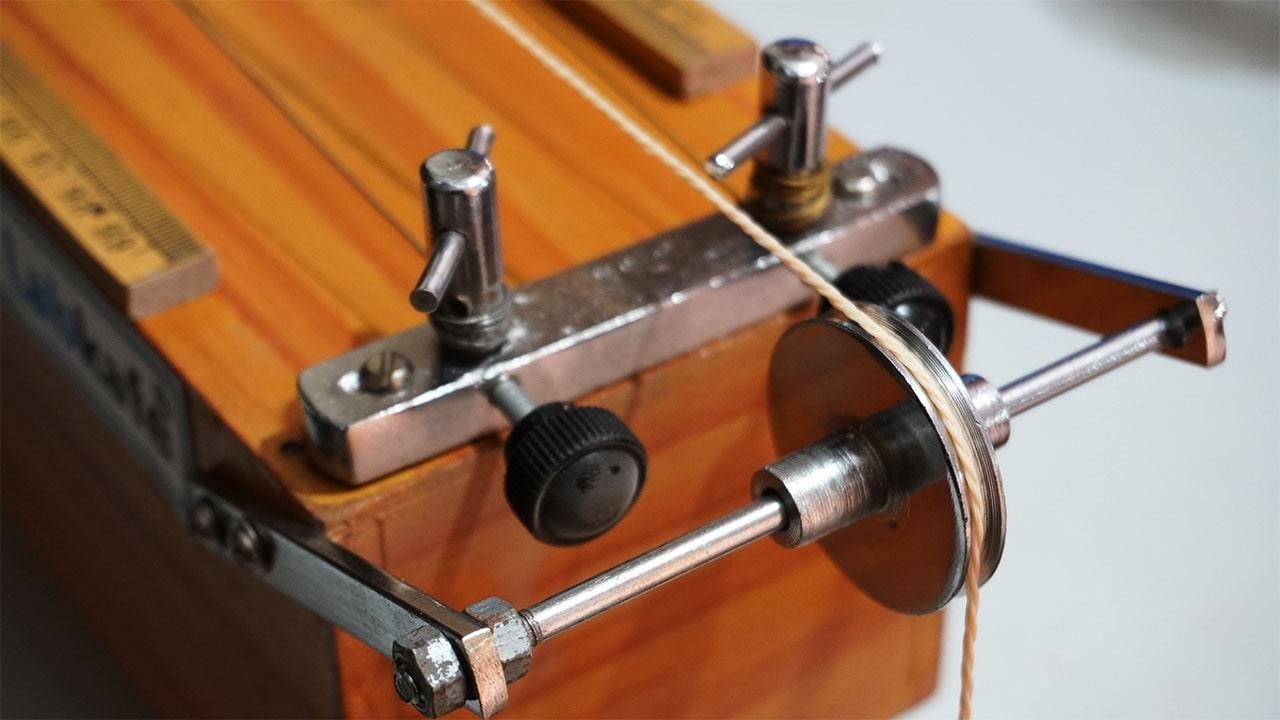
We would record those data about the length, tension, and frequency ‒ and then we’d proceed with another setting of the same. At the end of the experiment, we will plot all of those data on graph papers so that we can figure out how they are related to each other.
Let’s move forward to the sonometer experiment procedure.
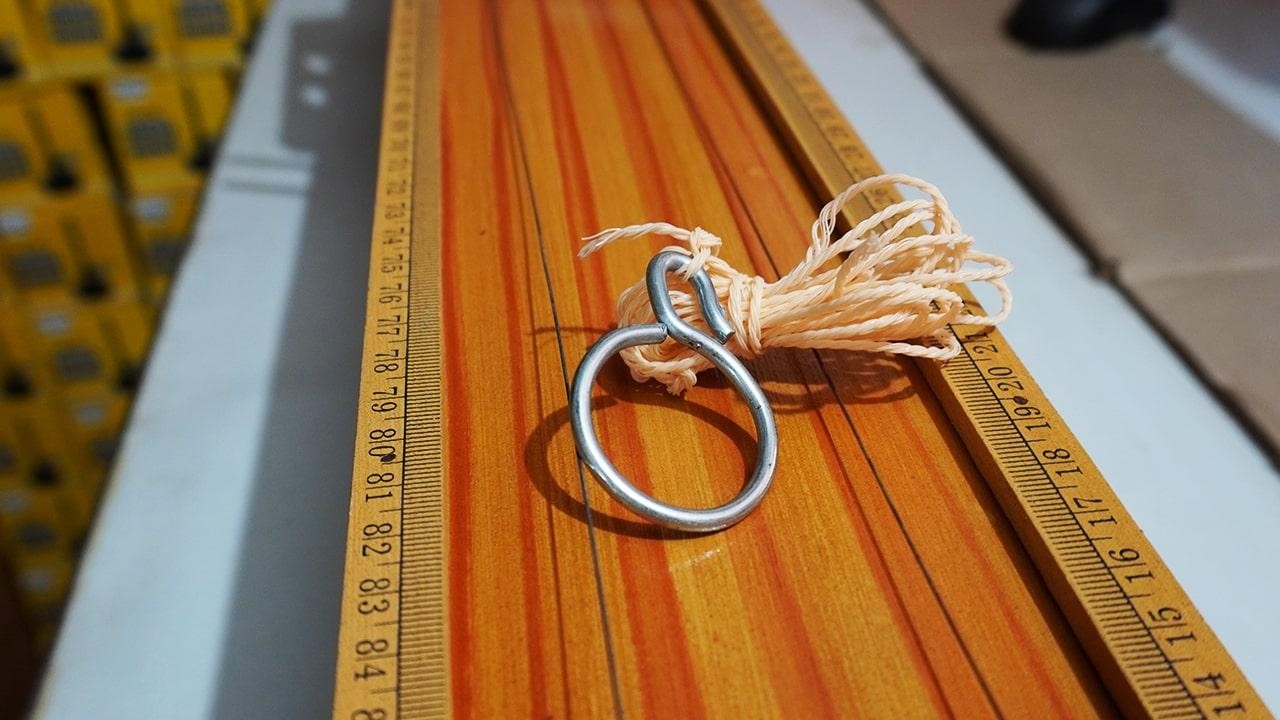
A sonometer is basically a long wooden box with a system on top to mount a wire tightly. You will need to set this up at the beginning of the sonometer experiment.
That’s all there is to it ‒ your sonometer is all set up now for work.
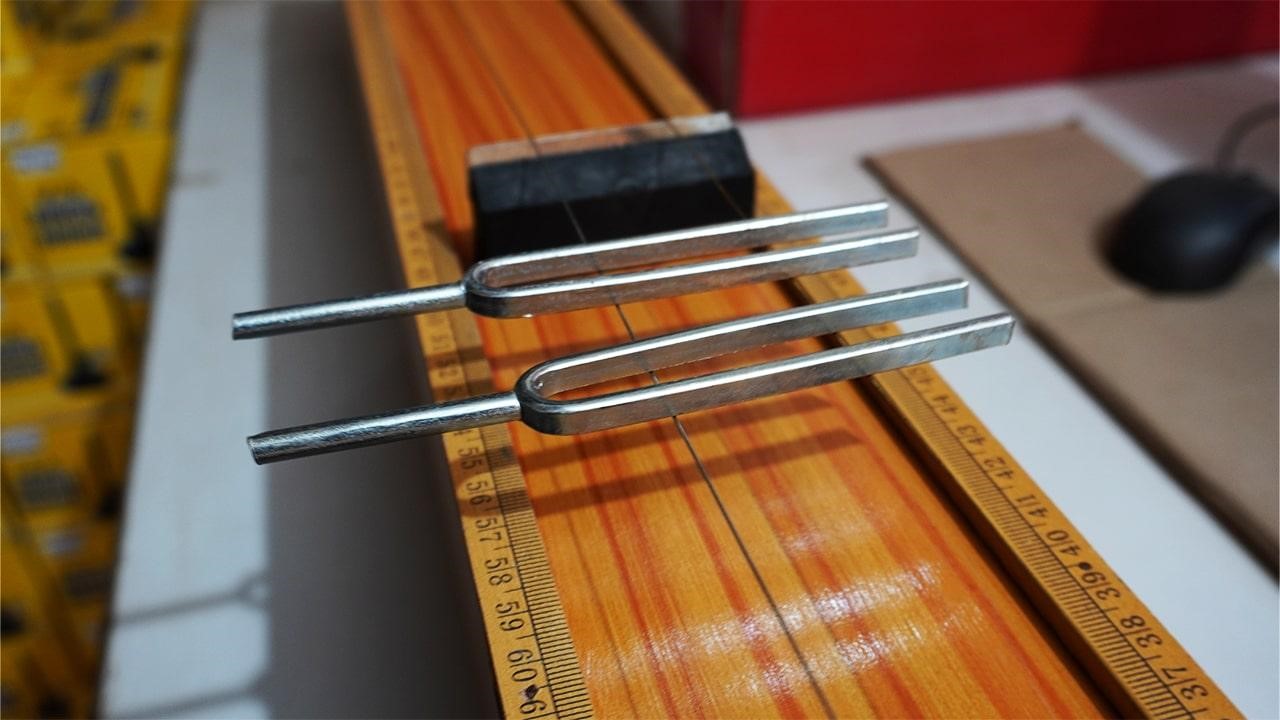
Now that you have your sonometer all set up and ready, you can begin the sonometer experiment. Follow these steps to do it properly.
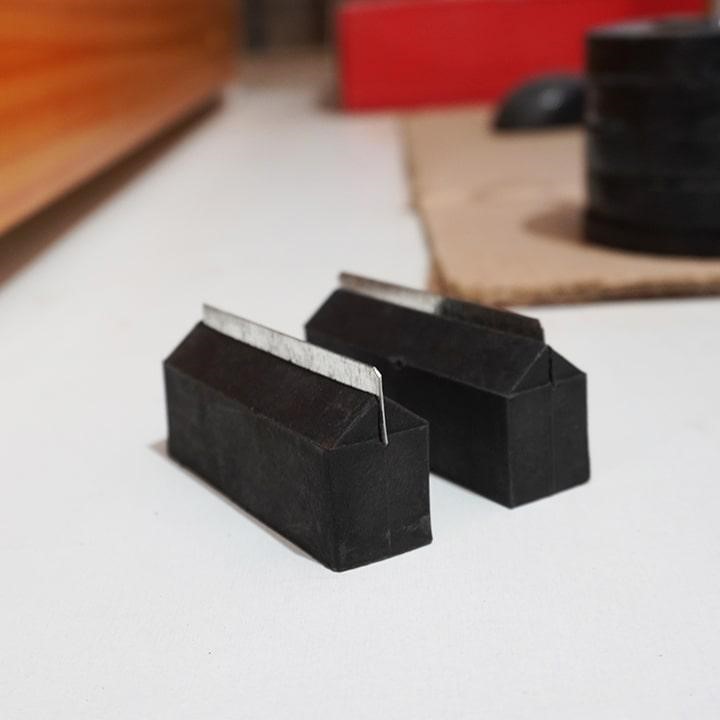
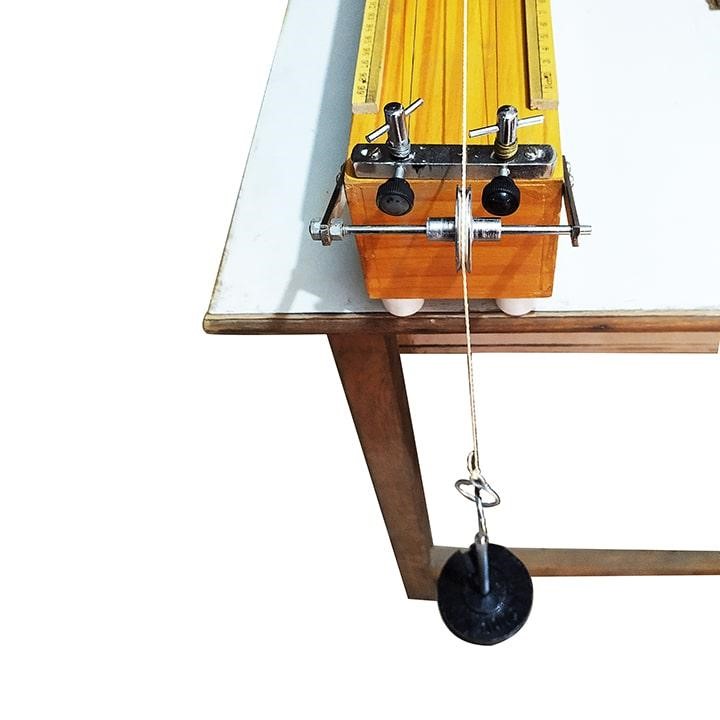
To perform this physics class 11 experiment, you will need to record the data in a specific format. Please make the following tables in your notebook and use the data from the experiment above to fill it up.
Sl. no. | Tuning fork frequency, f | Resonating wire length | 1/l (in cm-1) | ||
Increasing length, l1 | Decreasing Length l2 | Mean length l=(l1+l2)/2 | |||
1. | |||||
2. | |||||
3. | |||||
4. | |||||
Sl. no. | Load, M in Kg | Tension, T = M.g in N | Resonating wire length | L2 in cm2 | l2/T (in cm2/N) | ||
Increasing length, l1 | Decreasing Length l2 | Mean length l=(l1+l2)/2 | |||||
1. | |||||||
2. | |||||||
3. | |||||||
4. | |||||||
You can take as many data rows as you need, not only 4. Now plot the data in the graphs (f vs 1/l) and (l2 vs T). Both graphs should come out to be almost near straight lines.
We have taken some measurements in our system and the results are as follows:
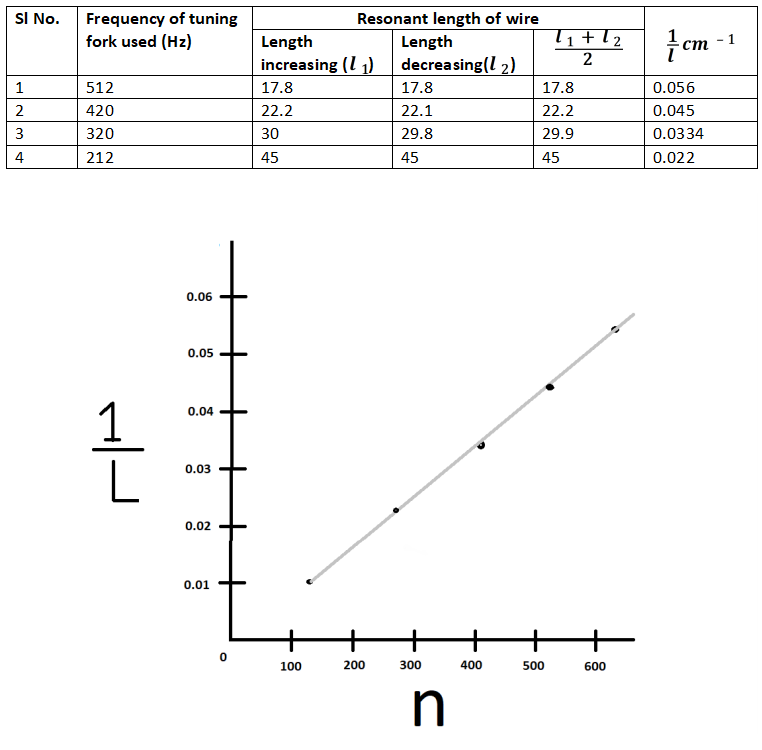
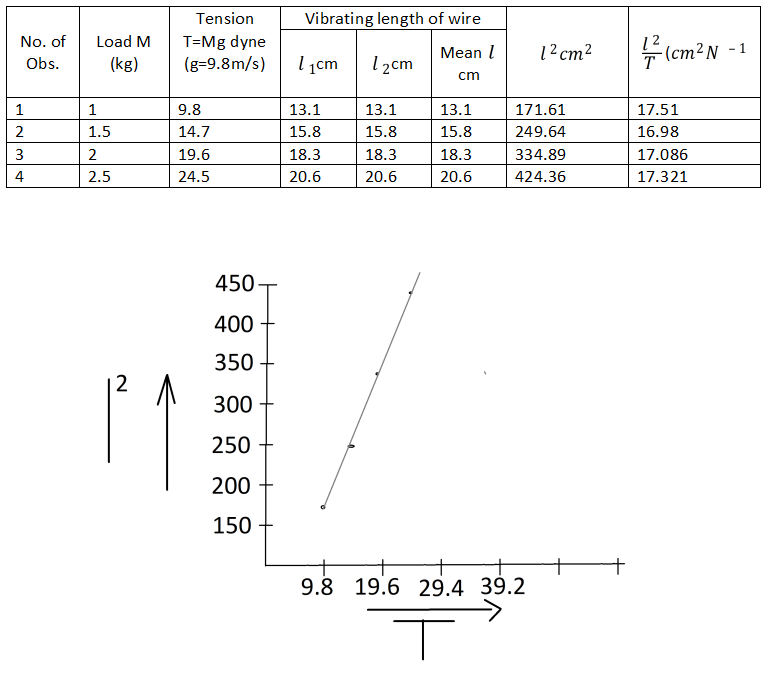
From the above graphs, you can see that the results come more or less in a straight line. This shows clearly how the length of a vibrating wire, the tension applied to it, and its frequency depend upon each other.
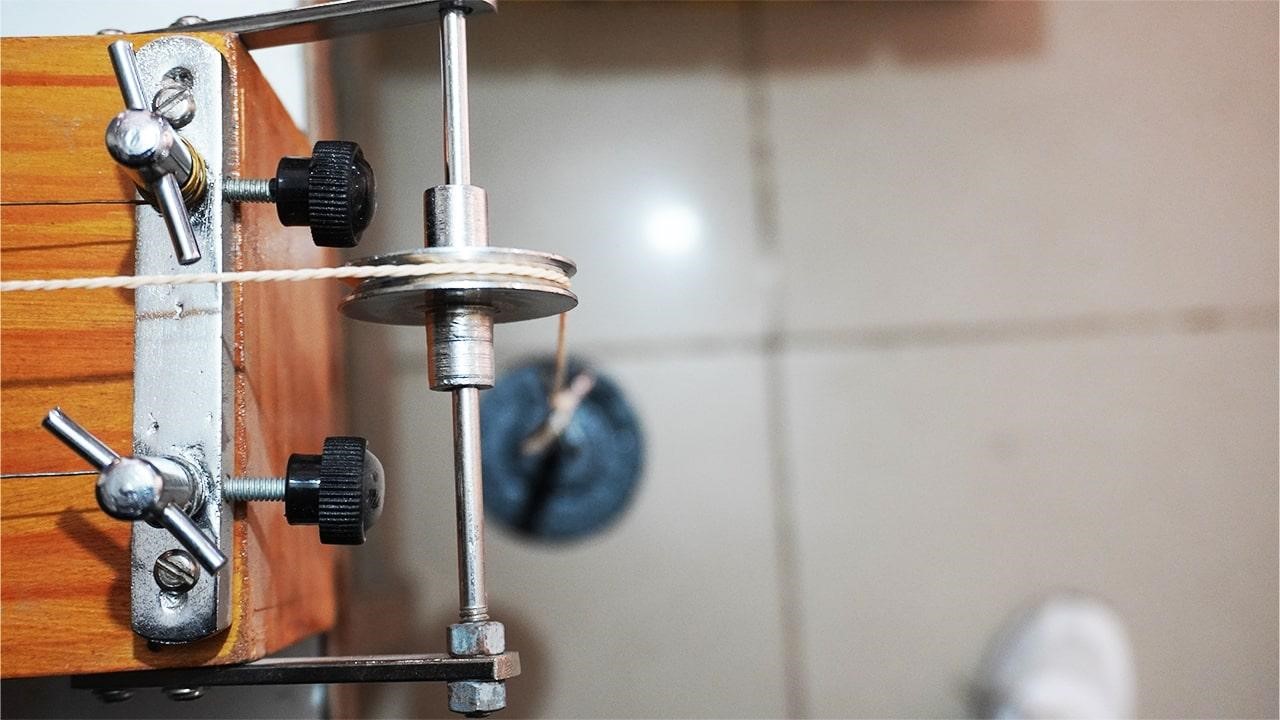
All the equipment you need to perform the sonometer experiment can be found in our CBSE/ICSE/State board lab equipment packages . The physics lab equipment package we have has the sonometer apparatus (teakwood), various kinds of wires, weights, and tuning forks.
It has been a pleasure describing the sonometer theory and practical to you! Please leave your thoughts and suggestions in the comment section given below. Happy learning!
Labkafe is among the most promising laboratory supplies vendors in India. We manufacture and supply lab equipment, lab furniture, lab consumables, lab glassware, lab machines and more! Not only we manufacture lab items, we export to international resellers too. We fulfill CBSE ICSE ISC IGCSE IB State board affiliation requirements for schools by providing affiliation packages to schools. Our featured products are:
Chosen by over 1200 schools, colleges, universities, research labs, government agencies and private companies to build or renovate their laboratories, Labkafe stands as your best friend when it comes to labs. We are also a registered OEM on GeM. Our clients love us because we provide the best quality of lab products, free demos, free installation, and support for ever.
Do you wish to experience excellence too? Why not contact us today at [email protected], or call 9147163562 directly ‒ we are always available to serve. You can also use the chat button in the corner to connect to one of our representatives instantly!
Feb 16, 2023 by Biswajit Sana
Jan 24, 2023 by Biswajit Sana